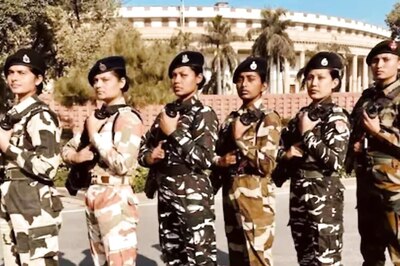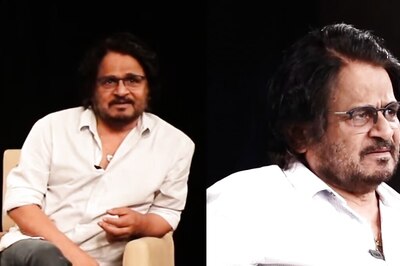
views
“Space is full of challenges but even God won’t deny success to the hard work put in by the ISRO team,” G Madhavan Nair, former chief of the space agency, told CNN-News18 as India waits with bated breath for Chandrayaan-3 to land on the Moon’s South Pole on Wednesday evening.
Explaining why India chose the South Pole unlike its contemporaries, Nair said there were two reasons. “One is that the presence of large quantity of water is confirmed on the South Pole. So, in the future, if you want human presence, South Pole is the ideal location. Second, since it is the dark side and there is not much disturbance, we may get some idea about the origin of the Moon and the condition of the Earth when the Moon spun off on the Earth. So the data we get will throw some light on the basic principles behind origins of the planet Earth itself.”
Nair said the mission was extremely critical as it would help confirm the presence of Helium 3 and other exotic minerals, which would be an “opportunity” to validate information received from Chandrayaan 1 & 2.
Chandrayaan-1, India’s first mission to the Moon, was launched on October 22, 2008, from Sriharikota spaceport in Andhra Pradesh. The spacecraft, carrying 11 scientific instruments built in India, the USA, the UK, Germany, Sweden and Bulgaria, orbited around the Moon at a height of 100 km from the lunar surface for chemical, mineralogical and photo-geologic mapping of the Moon. After the successful completion of all the major mission objectives, the orbit was raised to 200 km in May 2009. The satellite made more than 3,400 orbits around the Moon.
A decade later, Chandrayaan-2, comprising an orbiter, lander and rover, was successfully launched on July 22, 2019. The objectives of the country’s second mission to the Moon were scientific studies by payloads onboard the orbiter, and technology demonstration of soft landing and roving on the lunar surface.
Most of the components of technology demonstration, including the launch, orbital critical manoeuvres, lander separation, de-boost and rough braking phase were successfully accomplished. However, the lander with a rover in its belly crash-landed on the lunar surface in the final lap, failing in its objective to touch down gently.
Noting the complexity of the mission, Nair said the technology demonstration with respect to soft landing on a surface where there is no beacon and GPS has to be done autonomously using self-contained instrumentation. “So this will be cutting-edge technology and when we demonstrate it, we show we are on par with the western world as far as high tech is concerned.”
The former ISRO chief also said it was surprising that Russia’s space mission failed. “I don’t have much information on Luna failure but Russia did this 50 years ago and it is surprising that they faced issues this time. Approaching the Moon involves many uncertainties such as gravitation field around Moon and calibration etc.”
Nair, when asked about ISRO’s decision to take a call on putting off the mission in case of any hiccups, backed the space agency. “It’s a precious mission. We can’t afford to take any risk so it is right of ISRO to put it off if needed. We need to ensure that everything from on-board to on ground works in perfection. Only then we can give the final command for soft landing. So naturally two hours before landing they will take a call.”
Noting that Vikram Lander is better than last time, Nair said the last 15 minutes of the operation are autonomous with a computer taking control. “Imagine it as an aircraft landing in a field without beacons or radars. We are in a similar situation. There is no precise knowledge of the environment, especially gravitation pull etc. Optical measurement, laser imaging and doppler all are important, there are gyroscopes etc, then the control system to stabilise altitude, and ultimate challenge is finding a spot where there is not too much pollution such as boulders and craters. Once the onboard computer is satisfied, it will give a command for touchdown… It is a complex operation.”




















Comments
0 comment